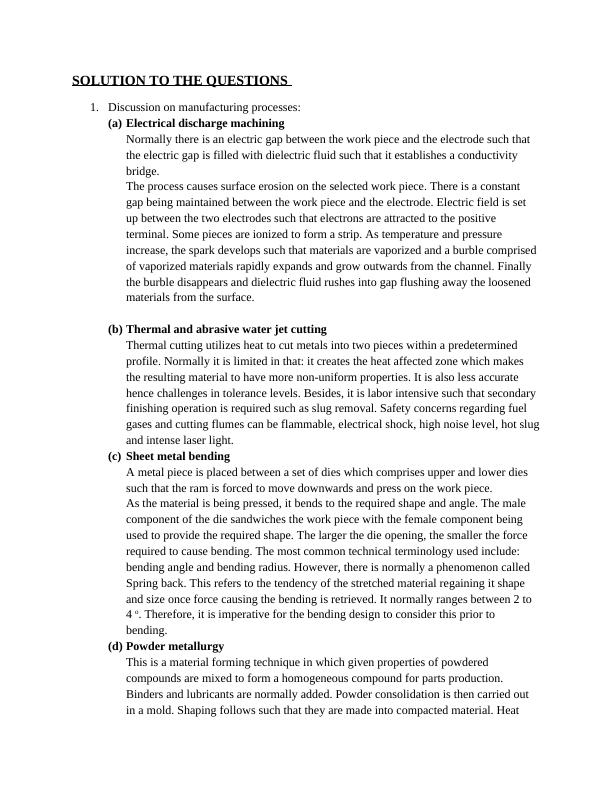Manufacturing Processes: EDM, Water Jet Cutting, Sheet Metal Bending, Powder Metallurgy
Discuss videos on manufacturing processes and design a toy or key chain using injection molding process.
3 Pages1002 Words54 Views
Added on 2023-06-13
About This Document
This study material from Desklib online library discusses various manufacturing processes such as Electrical Discharge Machining, Thermal and Abrasive Water Jet Cutting, Sheet Metal Bending, and Powder Metallurgy. It explains the working principles, advantages, and limitations of each process.
Manufacturing Processes: EDM, Water Jet Cutting, Sheet Metal Bending, Powder Metallurgy
Discuss videos on manufacturing processes and design a toy or key chain using injection molding process.
Added on 2023-06-13
ShareRelated Documents
End of preview
Want to access all the pages? Upload your documents or become a member.

